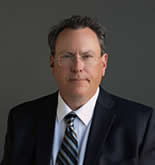The traditional methodology for addressing safety for facilities, machines or products is for owners, architects, engineers, consultants, contractors and vendors to complete the design, engineering, construction or fabrication of a project based on past knowledge, experience and training. Safety, though, has typically not been one of the required skills for these project participants.
Furthermore, the norm has not been to consider the safety of the people performing site work, construction, maintenance, fabrication, operation and decommissioning at the conceptual stage. Rather, each party has been left to consider and create an individual safety strategy for their portion of the project activity.
The planners may plan for fire and emergency egress. The construction managers may plan for construction site safety, often based on designs by others who did not consider construction safety. The maintenance team is typically left to plan for safety and compliance once the project has been completed. Often, retrofitting or other countermeasures must be incorporated after the project has been commissioned.
Is this working? Consider that through the 2007 Census of Fatal Occupational Injuries, fatal injuries from falls have increased to a high of 835 workers in a single year. That is a 39 percent increase since 1992. And in the previous five years, the construction industry has reported the largest increase in fatalities of any industry.
The 2009 Workplace Safety Index for Liberty Mutual shows that disabling workplace injuries cost the U.S. approximately $52 billion, and "falls to a lower level" have increased 33.5 percent over the last 10 years, now costing $6.2 billion annually in workers' compensation. According to OSHA, fall protection was the most penalized and the second most cited violation in fiscal year 2009.
The current strategy to address fall protection safety is not working. Not addressing fall hazards up front, that is, during the project concept stage, is placing the burden of fall protection countermeasures on contractors and maintenance personnel - who, as shown above, still face significant hazards. Thus, this safety strategy is unsustainable.
A Sustainable Safety strategy integrates safety methods throughout the lifecycle of a project. Every project activity, whether it is construction, renovation, demolition or process management, is an opportunity to economically maximize the safety performance of the final product by incorporating Sustainable Safety.
How can a company be "sustainable" if it does not incorporate the safety of the people who construct, maintain and use its facilities, machines and processes into the core of its business operations? The Sustainable Safety strategy creates a healthier and more efficient environment and protects personnel from foreseeable workplace hazards.
A key element to Sustainable Safety is the certification of each participant in the ability to identify and address foreseeable hazards with effective countermeasure integration. A Sustainable Safety certification advances the relationship between safety, business, construction, maintenance and operation activities. It provides a safety strategy to the design team, owners and managers for the incorporation of continuous employee safety into designs, products, educational programs and services.
Certified building planners, design engineers and design architects become aware of and consider, at the conceptual stage, the personal safety of the project's construction, maintenance and operation personnel and their equipment as they create their projects. Sustainable Safety certified building managers will have clearly defined policies and safety procedures established, implemented and enforced throughout the project lifecycle.
These certified planners, engineers and architects will meet the Sustainable Safety requirements of a safe workplace with all known and foreseeable safety hazards eliminated or controlled for each of the projects functions and required work activities. This will establish a sustainably safe culture for future personnel.
The recent shift in building codes and standards addressing the previously undefined safety roles of the design team indicates the impact of Sustainable Safety.
The new fall protection code from ANSI now requires the design team, owners and managers for all new facilities / buildings to give special consideration to eliminating or controlling known and foreseeable fall hazards by consulting, communicating and coordinating with safety and health professionals.
The design team must also communicate with building personnel and contractors to find out if authorized persons (i.e., a person assigned by an employer to perform a specific type of duty at a jobsite location where someone will be exposed to a fall hazard) are likely to have problems while performing their jobs. The designers need to review accidents or near-miss incidents as well as relevant standards, regulations and guidance documents for similar facilities to determine what type of foreseeable risks the building personnel will face during the performance of their workplace duties.
ANSI goes on to say that the design team, owners and managers when planning and designing new buildings or facilities should keep in mind that every area of a building, structure, roof, equipment, machinery, amusement park and/or facility of any type will require maintenance or repair work at some point. Safety control measures must be incorporated into the design phase to eliminate and control the exposure to those safety hazards.
Sustainable Safety is a culture change. Today, whether we realize it or not, we permit workplace hazards to continue when we take a calculated risk that our employees won't be caught or hurt or assume it won't happen to us. Sustainable Safety is an approach that goes beyond the nuts and bolts of engineering to incorporate sound safety practices meant to protect employees throughout the entire lifecycle of a project.
Sustainable Safety must permeate a company's network of internal disciplines: management, purchasing, legal, safety, engineering, maintenance as well as its external network of engineers, architects, contractors and vendors. This is necessary to create a progressive lifecycle approach to protect a company's people and property and to promote strength in a global marketplace.
It is no longer practical for a company to ignore the viability of safety as an instrumental business practice. The direct results are:
A safer facility, process or machine during all phases of the project's lifecycle.
A reduction of unknown or hidden project danger zones for the personnel involved with the project's functions.
A generation of innovative, long-lasting Sustainable Safety strategies. In summary, the safety knowledge and practices of project developers, owners, engineers, architects and contractors are critical factors in defining a project's sustainable success.











